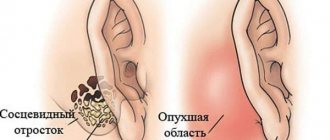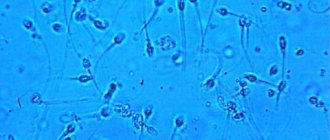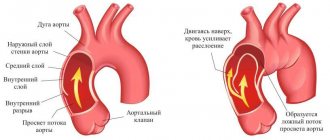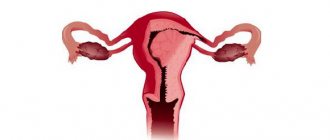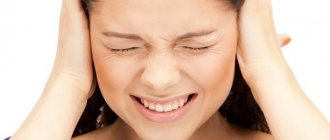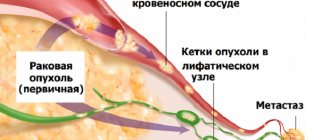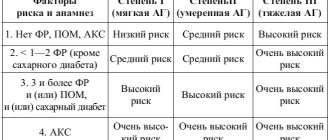Conductive hearing loss is a type of general hearing loss characterized by impaired hearing function due to problems with the transmission of sound waves into the inner ear.
A similar diagnosis is made by ENT doctors for both young and adult patients after infections, injuries to the skull or sound-conducting organs, as well as due to various modifications of the ear sections.
Like other types of hearing loss, the sensorineural or mixed conductive form is divided into several degrees, depending on the severity of the damage to the auditory analyzer. For what reasons does the disease occur, how to diagnose it in time, and what methods of treating the pathology exist - this will be discussed further.
Total information
Conductive hearing loss is one of the most common pathologies in otorhinolaryngology. This is explained by the existence of many factors that can become an obstacle to the path of sound waves to the sound-perceiving apparatus.
According to statistics, in 67-70% of all clinical cases, conductive hearing loss develops due to damage to the Eustachian tube, auditory canal or tympanic cavity, as well as combined damage to these structures.
note
It was revealed that in 2.1% of patients with conductive hearing loss, disorders observed in the sound conduction system are irreversible.
Conductive hearing loss is diagnosed in adults 13 times more often than in childhood. Men and women get sick equally often; residents of megacities get sick more often than residents of small villages.
Causes of deafness
Deafness can be due to two main types of causes:
- Impaired sound conduction, i.e. problems in the part of the nervous system that is responsible for transmitting signals from the ear to the brain. This type of deafness is called conductive deafness.
- Impaired sound perception. Behind these pathologies are problems directly related to the auditory analyzer (the ear and the nerves located in it). In this case, the disease is called sensorineural or sensorineural hearing loss.
Causes of deafness can also be:
- Congenital;
- Acquired.
The first group includes:
- Fetal hypoxia during pregnancy and at birth.
- Jaundice in the neonatal period.
- Some diseases suffered by the mother during pregnancy, in particular syphilis, rubella.
- Hereditary diseases cause hearing impairment in approximately 30% of cases. At the moment, about a hundred deafness genes have been discovered, which can be located on any of the non-sex chromosomes.
- Taking drugs with ototoxic effects by the mother during pregnancy.
Acquired deafness can develop as a result of the following factors:
- Inflammatory diseases of the ear - otitis.
- Taking drugs with ototoxic effects.
- Injuries, presence of foreign objects in the ear canal.
- Prolonged exposure to noise. The threshold for such sound radiation is 70-75 dB and 4000 Hz.
- Disruption of the nerve cells of the auditory canals due to age-related changes.
Causes
The main fundamental cause of conductive hearing loss, which is one of the forms of hearing loss, is a deterioration in the conductivity of the sound wave (signal) from the outer ear to the sound-receiving apparatus. The pathomorphological reasons for the deterioration of such conductivity is the distortion of sound waves when passing through the structures in which disorders develop:
- external ear;
- middle ear;
- endolymphatic space;
- snails
These violations are observed under such conditions as:
- deterioration of the conductivity of the outer ear;
- violation of the eardrum;
- pathologies that develop from any structure of the middle ear;
- diseases and pathological conditions of the inner ear.
Impaired patency of the outer ear, which contributes to the development of conductive hearing loss, is provoked by the following factors:
- foreign bodies (including cerumen plugs - deposits of cerumen in the ear in the form of small lumps);
- tumors – benign and malignant (including metastatic – they are formed from tumor cells formed in other organs and tissues of the body);
- Otitis externa is an inflammatory, septic (infectious) lesion of the structures of the outer ear;
- the formation of “swimmer’s ear” - otitis externa (inflammation of the outer ear), which forms when water frequently enters the outer ear;
- exostoses – pathological bone outgrowths of the temporal bone;
- injuries (especially repeated);
- congenital malformations;
- atresia (fusion) of the auditory canal - both congenital and acquired.
All these pathologies worsen or even make it impossible for sounds to pass to the eardrum.
Problems with the eardrum that can lead to conductive hearing loss are most often:
- its perforation (perforation) due to an acute type of acoustic trauma (damage due to exposure to a strong sound on the eardrum);
- tympanosclerosis (or pseudootosclerosis) is a pathology in which connective tissue grows in the mucous membrane covering the structures of the middle ear, then it undergoes calcification (deposition of crystals of calcium salts) and gradual ossification, due to which the structures of the middle ear lose mobility and, as a result, , the ability to transmit sound vibrations;
- sudden changes in atmospheric pressure - they can be observed during a rapid rise to a height or an equally rapid descent (for example, while on board an airplane).
note
Violation of the tissues of the eardrum can result in a deterioration in the transmission of mechanical vibrations to the auditory ossicles.
Damages to the structures of the middle ear that can lead to the development of conductive hearing loss are most often diseases and pathological conditions such as:
- exudative otitis media - inflammatory damage to the structures of the middle ear (acute or chronic), accompanied by the formation of non-purulent discharge;
- purulent otitis media - purulent inflammation of the formations of the middle ear, which can either transform from exudative otitis media or arise as a primary process due to damage to the tissues of the middle ear by pathogenic microorganisms;
- otosclerosis is a pathology in which bone tissue grows in the middle ear, due to which the mobility of its structures deteriorates and can even develop into their complete immobilization;
- tubootitis - simultaneous acute or chronic inflammatory damage to the mucous membrane of the Eustachian tube and the walls of the tympanic cavity;
- cholesteatoma is a tumor-like formation, which is a cavity that is surrounded by a connective tissue capsule and filled with dead epithelial cells, as well as a mixture of some biological substances (mainly keratin and cholesterol crystals). It forms in the middle ear, but can spread to the mastoid process, less often to the paranasal sinuses;
- blockage of the pharyngeal opening of the auditory (Eustachian) tube with adenoid growths or other pathological formations (benign and malignant - bone, epithelial, connective tissue, and so on).
Diseases of the inner ear that can lead to the development of conductive hearing loss are:
- obstruction of the round or oval window of the cochlea;
- formation of cracks in the anterior semicircular canal.
With these pathologies, the normal movement of the endolymph is disrupted, which normally transmits vibration to the organ of Corti - as a result, sound does not travel through the structures of the inner ear.
Causes of the disease
The factors leading to the conductive form of hearing loss can be very diverse, as well as its course. It is necessary to consider the main causes of the development of this disease:
- Formation of sulfur plug. Since most cases of conductive hearing loss are caused by problems in the outer ear, wax plugs are one of the most common causes. Normally, the epithelium of the external ear canal produces a certain amount of sulfur per day - it is needed to cleanse the smallest particles of dust, dirt and other foreign bodies. If for some reason wax accumulates and is unable to come out, it gets stuck into a plug that clogs the ear canal, significantly reducing hearing function.
- Otitis externa. With a pronounced inflammatory process in the cavity of the outer ear, a complication may develop - conductive hearing loss. This also includes trauma to the external ear caused by mechanical means.
- Pathologies of the eardrum. A membrane is a specific film (membrane) that is located on the border of the outer and middle sections of the ear. If, due to an inflammatory process or mechanical damage to the membrane, it is perforated (a hole is formed), or worse, a rupture occurs, this is fraught with the development of hearing loss. The main symptoms of a violation of the integrity of the membrane are significant hearing loss and bleeding from the external ear canal.
- Pressure difference. If the pressure in the cavities of the middle and outer ear sharply changes, this leads to excessive tension of the eardrum and the muscle that leads to the auditory tube and is responsible for the tension of the membrane. It is long-term increased stress that can lead to conductive deafness.
- Pathological diseases. This includes acute and chronic forms of otitis media, which occur against the background of the formation of serous or purulent exudate. Normally, the parts of the ear should not contain fluid, so its appearance causes hearing loss and dysfunction of sound conduction.
A child cannot always clearly signal the problem of hearing loss, so childhood ear diseases should be treated with doubly careful attention.
Children are most susceptible to this disease, since the structure of the Eustachian tube in a child is different from its structure in an adult. Due to the fact that it is shorter and wider, viruses and pathogenic bacteria can easily penetrate into the ear cavity, causing the onset of the inflammatory process.
If in the acute stage of the disease you do not seek help from an ENT doctor, the consequences can be dire, including complete loss of hearing.
Development of pathology
Conductive hearing loss develops due to dysfunction of the sound-conducting system, namely its elements: the external auditory canal, eardrum, middle ear (its cavity and auditory ossicles), endolymph and cochlea . During normal functioning, the mentioned elements of the hearing organ are responsible for amplifying and transmitting sound vibrations to the sound perception system. They work in harmony as a whole, and disruption of at least one of these structures provokes distortion of the transmitted vibrations, which is why the sound simply does not reach the target - the sound-receiving system.
It should be remembered that in this case the function of the organ of Corti, the auditory nerve and the parts of the brain responsible for hearing (namely the posterior parts of the superior temporal gyrus) do not suffer - they simply do not receive sound signals via the airway. At the same time, bone conduction of sound remains unchanged, and due to it, hearing is partially preserved - thanks to this, complete deafness does not develop in such patients. But in severe cases of impaired air conduction of sounds, a person can normally perceive only his own speech.
In otorhinolaryngology, there are four degrees of severity of the described pathology - this division is based on the degree of hearing impairment. The degrees are distinguished by the distance at which the patient distinguishes between spoken and whispered speech:
1st degree - the patient can distinguish spoken speech at a distance of up to 15 meters, whispered speech - up to 3. If he is addressed in the presence of external noise effects, or the addressed speech is distorted, then it is not perceived at all. The tonal threshold (the intensity of sound that the patient can distinguish) ranges from 20 to 40 dB (decibels);- 2nd degree - the patient is able to distinguish spoken speech at a distance of up to 5 meters, whispered speech - up to 1 meter. In this case, speech intelligibility sharply deteriorates - in normal, not noisy conditions, the patient must be addressed, increasing the strength of the voice, so that he hears the speech addressed to him. The tonal threshold is in the range of 40-60 GB;
- 3rd degree - the patient perceives ordinary spoken speech at a distance of no more than 2 meters, while he simply cannot hear whispers and sounds below 50-70 dB;
- Grade 4 – without assistive hearing devices, the patient is unable to recognize human speech. They hear only those sounds whose strength is at least 70 dB. Whispered speech is not perceived at all, even if it is heard just above the patient's ear.
Description
Grade 1 hearing loss is the initial stage of the disease. The disease has not yet reached full force, and absolute deafness is still far away. In general, if a diagnosis of “1st degree hearing loss” is made, this means that the disease is completely reversible. But it is necessary to urgently begin treatment to return hearing to normal.
In scientific terms, hearing loss is a persistent impairment of the body’s auditory activity, which is manifested by a sharp or gradual deterioration in the perception of sounds. The disease itself is caused by the fact that the auditory nerves become unusable. The degree of hearing loss depends on how many nerves are affected. In the first degree, the process of hearing loss is in the initial stage.
Hearing loss is dangerous not only in itself, it also affects the fact that a person’s speech begins to deteriorate. In addition, hearing loss causes severe discomfort because a person constantly or periodically hears unpleasant noise in the ears.
Most often, the disease affects older people due to age-related changes. As a result of natural aging, the nerve endings of the cochlea gradually atrophy in people. As a result, this can lead to complete and irreversible hearing loss. In this case, people have to use a hearing aid.
It should be noted that the process of development of hearing loss is irreversible. That is, if hearing loss begins, it will continue until the person becomes completely deaf. However, this will only happen if treatment measures are not taken in time. Fortunately, at the first stage of the development of the disease, it can still be easily stopped, and even hearing can be completely restored.
The first degree of hearing loss is characterized by the fact that a person hears only sounds pronounced 3-5 meters away from himself. What happens beyond this distance is difficult for him to distinguish, often just as background noise.
Symptoms of conductive hearing loss
Conductive hearing loss is manifested by such symptoms as:
- hearing impairment is the main symptom of the described pathology;
- a feeling of stuffiness in the ears on one or both sides;
- pain.
Hearing impairment refers to the loss of its acuity, which can develop:
- gradually;
- sharp.
Hearing loss develops as:
- deterioration in the perception of both spoken and whispered speech;
- the inability to distinguish the interlocutor’s spoken speech from background extraneous noise - in other words, all sounds merge into a single chaotic sound “mess”.
Patients describe stuffy ears as follows: “The ears seem to be plugged with fingers or earplugs.” Some patients note that they subconsciously pick at their ears, trying to eliminate the “cause” of congestion. At the same time, thanks to the preservation of bone conduction, a person continues to hear his own voice and subjectively perceives it as louder in comparison with the sounds of the environment.
Characteristics of pain that occurs with conductive hearing loss:
by localization - local, inside the ear;- by distribution - rarely spread outside the ear structures;
- by characteristics - predominantly pressing, although they can also be aching, with alternating pressing pain sensations;
- in terms of intensity - depending on what pathology led to the disruption of the sound conducting system of the ear, they can be either moderate, tolerable, or quite strong;
- by development - also depending on the cause that caused conductive hearing loss, they can be periodic or constant, intensifying from time to time (most often when sneezing or while chewing, especially solid food).
Symptoms of the disease
In children and adults, the symptoms of conductive hearing loss are approximately the same:
- noise in ears;
- dizziness;
- pain of varying degrees in the ear area;
- discharge from the ears - bloody or purulent.
In children, as a rule, symptoms are more pronounced. The pain is severe, fever, chills appear, vomiting and loss of coordination of movement may occur.
If any of these symptoms appear, you should consult a doctor. Only he can make an accurate diagnosis and save you from deafness.
Diagnostics
Detecting hearing impairment with conductive hearing loss is not problematic. But in order to determine that it develops due to a violation of sound conduction, a full diagnostic examination of the patient should be carried out, which consists of:
- collecting anamnesis - clarifying the details of the history of the pathology that could lead to the occurrence of the described disease;
- carrying out additional examination methods - instrumental and laboratory.
To make a diagnosis, instrumental examination methods such as:
- otoscopy – using an ear mirror and a reflector, an examination of the external auditory canal and eardrum is carried out. In this case, inflammatory processes in the walls of the passage, a violation of the structure, or the presence of a foreign body in it (including cerumen plug) can be determined. When examining the eardrum, inflammation, protrusion, surface unevenness, so-called retraction pockets (retractions) and/or perforation (through defect) may be detected;
- microotoscopy - examination of the external auditory canal and eardrum is carried out using a special microscope. In this case, the resulting image of the inspected structures can be displayed on the monitor for better viewing;
- tuning fork tests by Rinne and Weber - a tuning fork is struck and its stem is alternately placed on various structures of the head in the ear area. If the hearing loss is conductive in nature, then the patient hears a louder sound of the tuning fork if it is placed on the mastoid process, and a quieter sound near the auricle on the affected side. Also, a sounding tuning fork is installed along the midline of the head on its parietal part. Moreover, if unilateral conductive hearing loss has developed, the patient perceives the louder sound of the tuning fork from the affected side;
- audiometry is the study of a patient’s hearing using human speech addressed to him. The graphs that are drawn at the same time demonstrate a progressive deterioration in air conductivity, the function of the sound-receiving apparatus remains normal;
tympanometry - during this method, pressure of various sizes is created in the external auditory canal and the degree of mobility of the eardrum, as well as the conductivity of the auditory ossicles, is studied;- X-ray examination of the temporal bones - using this method, it is possible to identify violations of the structure of the external auditory canal, as well as the middle and inner ear, which entailed a violation of sound conduction. Often radiography is performed in two projections;
- computed tomography (CT) - its diagnostic value is the same as that of x-ray examination of the temporal bones, but the possibilities are wider - with the help of computer slices, you can study in more detail the changes that lead to conductive hearing loss;
- Magnetic resonance imaging (MRI) – the capabilities and goals are the same as the capabilities and goals of CT.
Of the laboratory research methods, the following have diagnostic value:
general blood test - if an increase in the number of leukocytes and ESR is detected, this indicates the inflammatory nature of the pathology that provoked the development of conductive patency;- bacterioscopic examination - consists of examining discharge from the external auditory canal, if any, under a microscope. Using this method, the pathogens that caused the inflammatory process that provoked the described lesion are identified;
- bacteriological examination - they inoculate discharge from the ear on nutrient media, from the grown colonies they determine the pathogen that provoked inflammation, which led to the formation of conductive hearing loss, and also determine the sensitivity of the pathogen to antibiotics, which is important for the choice of antibacterial drug.
Treatment
Depending on the causes of the disease, its etiology and the degree of damage to the auditory analyzer, treatment of conductive hearing loss can be carried out in various ways. The choice of therapy is made by the doctor and agreed with the patient or parents if the disease is diagnosed in a child. Next we will talk about the most popular and effective methods of treating pathology.
Drug treatment
Since the conductive form of hearing loss most often develops after a bacterial infection of one of the ear sections, the consequences of inflammation must be treated with antibiotics. In this case, the doctor selects drugs that do not have ototoxicity, that is, unable to aggravate the situation.
Preference is given to drugs with a wide range of effects, and it is better to administer drugs intramuscularly to avoid side effects from systemic administration.
The consequences of mechanical damage and trauma are treated with drugs that improve blood supply to tissues, reduce the level of pressure in the inner ear and increase cerebral hemodynamics. Such medications include Vinpocetine, nicotinic acid, Papaverine, Bendazole and others.
The list of necessary drugs can be expanded by the treating specialists, depending on the clinical indications and intermediate results of treatment
Damage to the hearing system that occurs due to severe intoxication of the body is eliminated with the help of dehydration, detoxification and metabolic therapy.
Physiotherapy
Physiotherapy sessions for conductive hearing loss are justified by the need to improve blood supply to tissues, accelerate their regeneration and recovery, and also bring the muscles of the eardrum, its tissue and the surrounding auditory ossicles into normal working condition. What methods of physiotherapy are used for hearing loss are described below.
Electromyostimulation
It is carried out when the proper functioning of the eardrum and auditory ossicles is impaired. The effect of low-frequency current on muscle tissue leads to vibration of the membrane, as well as alternate tension and relaxation of the muscle leading to the eustachian tube. At the same time, the work of the auditory ossicles is stimulated.
Oxygen barotherapy
It is used to treat hearing loss caused by insufficient oxygen supply to the tissues of the auditory analyzer, nerve and epithelial cells of the inner ear. Saturates cells with oxygen, equalizes pressure inside the ears, accelerates tissue regeneration.
UHF diathermy
Ultra-high current frequencies have a thermal effect, increase blood circulation in the affected area, improve metabolic processes and tissue regeneration, accelerate biochemical processes, neutralize toxic products, and increase local immunity.
Vibroacoustic therapy
It is carried out using the “Cytophone” and “Vitafon” devices - it stimulates microvibration of the tissues of the cochlea, eardrum and auditory ossicles, this allows to increase the outflow of blood and lymph, improve the blood supply to the receptors, and increase the effectiveness of the medications used.
Electrophoresis on the collar area
Allows you to reduce pain, reduce the level of inflammation in acute processes, and also improve metabolic rates. The procedure is carried out using the drugs No-shpa, Eufillin, Dibazol, nicotinic acid and others.
Physiotherapy as a method of complex therapy for conductive hearing loss has long been successfully used by otolaryngologists.
A good effect from physiotherapy is observed after completing a full course of 10–14 sessions.
Politzer blowing
This procedure is indicated for those patients in whom the conductive form of hearing loss was diagnosed due to an acute inflammatory process in one of the parts of the ear, after suffering eustachitis or resulting barotrauma (sharp change in atmospheric pressure during immersion in water, climbing to a high altitude by a climber or air travel) .
Occupational sensorineural hearing loss
The essence of blowing is the introduction of air under pressure into the cavity of the Eustachian tube. Blowing is carried out through the nasal cavity; before the procedure, it is cleared of mucus accumulations and treated with vasoconstrictors and painkillers.
Next, a tube connected to a rubber bulb is inserted into the nasal cavity; it is equipped with a round tip. When pressing the bulb, air enters the nasal cavity under pressure, and at this time the patient pronounces various words syllable by syllable, for example, cuckoo, steamboat, and others.
Blowing is carried out in a course and forms part of complex therapy for the treatment of hearing loss. The procedure allows you to eliminate the accumulation of purulent and serous exudate from the ear cavity, and restore the shape of the eardrum if it is deformed.
Most patients after the first procedures note a sharp improvement in hearing, however, if no positive changes are observed after a course of therapy, it is recommended to use other methods of hearing restoration for hearing loss.
Surgery
Today, doctors offer a large selection of surgical operations that can completely restore hearing function in case of conductive hearing loss. In some cases, full operation of the auditory analyzer is achieved even with symptoms of complete deafness, therefore surgical intervention, as a method of treating this disease, is considered the most effective.
Myringoplasty
So, this is the name of a type of surgical intervention during which it is possible to restore the integrity of the eardrum, which was damaged due to acute otitis media or mechanical trauma. The operation is performed under general anesthesia. To restore the integrity of the membrane, a skin flap is taken from the patient located on top of the auricle.
A special microscope is inserted through the external auditory canal, which allows complete control of the intervention process. Using a sponge-like material, the skin flap is pressed against the membrane tissue on both sides, which allows you to completely restore its integrity.
Performing myringoplasty is a scrupulous and painstaking job
During the rehabilitation period, the patient is recommended to avoid sudden changes in pressure inside the ear - do not blow your nose too intensely, do not suck in air through your nostrils to prevent the skin flap from moving from the surface of the eardrum.
Tympanoplasty
This procedure is performed for the same reasons as myringoplasty, but doctors recommend it for severe membrane ruptures and after severe mechanical injuries. The operation is also performed under general anesthesia using a microscope. The difference is that the skin flap is fixed to the membrane tissue using a denser material, which dissolves on its own as it heals.
With the help of tympanoplasty, it is possible to ensure that water does not enter the cavity of the middle and inner ear, and also reduce the risk of tissue infection. After the operation, the patient's tinnitus decreases, hearing improves and general condition normalizes.
Prosthetics of auditory ossicles
To restore hearing function lost due to damage to the auditory ossicles, prosthetics are now widely used. As a prosthesis, a tubular rod is inserted into the ear cavity, fixing the cartilaginous plate and installed on the underlying stirrup plate. There are cuts on both sides of the prosthesis for more reliable fixation, and it is also equipped with a support platform that looks like a cartilage plate.
Installing an implant is a fairly simple procedure; moreover, the prosthesis does not need to be removed and cleaned daily; it is securely attached inside the ear cavity, significantly improves the quality of hearing, and gives the patient the opportunity to fully hear and communicate with others.
Prosthetics is one of the hearing restoration procedures
Hearing aids
This method of eliminating hearing loss is suitable only for those patients who suffered from an advanced form of the disease, which led to irreversible damage to the auditory center. The selection of a hearing aid is carried out by a doctor and agreed with the patient, taking into account his wishes and financial capabilities.
A hearing aid is a portable device that can be handheld, in-ear, or behind-the-ear. It consists of several parts - this is a microphone that receives and converts sound waves, then there is an electronic amplifier, a power supply and a telephone.
Many patients note a significant improvement in their quality of life after installing a hearing aid; fortunately, there is now a wide selection of models that are highly effective and designed for maximum comfort of use.
In order to prevent the severe consequences of conductive hearing loss, in particular, complete hearing loss, it is necessary to identify and treat diseases of the hearing organs in a timely manner. Many patients prefer to self-medicate for a long time for acute otitis media, which may be accompanied by discharge of blood and pus from the ear.
This tactic is fundamentally wrong, since prolonging the inflammatory process and refusing drug treatment can lead to disastrous consequences. A person must take responsibility for his health in any case, and even more so when it comes to one of the main functions in the body - the ability to fully hear.
Complications
The main complication of conductive hearing loss is complete hearing loss.
Conductive hearing loss itself is a complication of a number of diseases and pathological conditions. Therefore, it may not actually be the problem that is complicated, but additional complications of the pathologies that provoked it may arise, which results in an even greater deterioration of hearing. Most often this develops:
- damage to the temporomandibular joint, due to which in a patient with conductive hearing loss, ear pain increases when chewing and talking;
- sensorineural hearing loss - develops when pathological processes spread to the nervous structures of the inner ear, auditory nerve or brain structures.
Degrees of hearing loss
What is considered bad hearing? There are four degrees of hearing loss:
- First degree: a person perceives sounds from 25 to 40 decibels (for comparison, good hearing is the ability to perceive sounds up to 20 decibels). Whispered and distant speech is difficult to perceive, but conversation is perceived well.
- Second degree: the hearing threshold increases to 55 decibels. Whispered speech is perceived at a distance of no more than one meter.
- Third degree: decibel values increase to 70. It becomes impossible for a child to perceive whispered speech. To hear your interlocutor, you need to approach him at a distance of one or two meters.
- Fourth degree: the hearing threshold reaches 90 decibels. It becomes almost impossible to perceive the speech of others.
When the hearing threshold reaches more than 90 decibels, hearing is completely lost. Deafness sets in.
A decrease in a child’s sound perception can begin suddenly: with a sharp decrease in the child’s hearing, pathology develops in just a couple of hours. In acute cases, the child’s hearing deteriorates within one month. Subacute decrease in hearing sensitivity occurs within one to three months. In the chronic course, a decrease in hearing abilities occurred for more than three months.
But a decrease in a baby’s ability to distinguish sounds is not a reason to be inactive! It is necessary to contact a competent otolaryngologist at the first signs of hearing loss.
The concepts of “deafness” and “hard of hearing” are often confused. With hearing loss, a person can still distinguish some sounds. Deafness is an extreme degree of hearing loss, and hearing is completely absent.
| Degree of hearing loss | Characteristic | Degree of hearing loss | Minimum volume, dB | Whisper audibility, m | Audibility of normal speech, m |
| I | Lightweight | 1 | 20–40 | 1–3 | 4–6 |
| II | Average | 2 | 41–55 | 1 | 1–4 |
| III | heavy | 3 | 56–70 | does not hear | 1 |
| IV | very heavy | 4 | 71–90 | distinguishes very poorly | |
| V | Hearing loss | 5 | 91 | does not hear |
The causes and treatment of hearing loss and deafness are the same.
Treatment of conductive hearing loss
Since many causes of conductive hearing loss have been identified, treatment is very different.
Important
The main principle of treatment for the described disease is to eliminate the cause that disrupts sound transmission.
Treatment for conductive hearing loss may include:
- conservative;
- operational.
Most often, in the conservative treatment of conductive hearing loss, the following are used:
- antibacterial drugs - when identifying the infectious component of the disease, as well as to prevent its development. Antibiotics are indicated in the early stages of hearing loss, if external or otitis media, eustachitis (inflammatory damage to the Eustachian tube) have developed;
- anti-inflammatory drugs – often non-steroidal anti-inflammatory drugs (NSAIDs);
- glucocorticosteroids - have multiple effects: eliminate inflammation, improve tissue function, and so on;
- if necessary, local treatment. It is often indicated for infectious and inflammatory lesions of the external auditory canal and eardrum, and consists of washing the passage with antiseptic drugs.
Surgical treatment is quite often used in the treatment of conductive hearing loss, in particular if it is caused by a mechanical factor. The operations that can be performed are:
surgical removal of a foreign body from the external auditory canal or middle ear;- restoration of the functions of the eardrum - in this case, its plastic surgery is performed;
- drainage of the tympanic cavity - removal of pathological contents, which, having accumulated, could disrupt the sound-conducting function of the ear;
- ossiculoplasty – prosthetic replacement of auditory ossicles;
- mastoidotomy - opening of the mastoid process with its sanitation (cleansing of pathological contents - most often purulent) and subsequent drainage
and some others.
If irreversible, non-treatable changes have developed in the outer or middle ear that interfere with the normal passage of sound, then hearing aids are performed - the patient’s hearing is improved with the help of a hearing aid. In this case, artificial amplification of perceived sounds is achieved - due to this, the impaired sound-conducting function of the ear is compensated.
Signs of hearing loss
In order to recognize and identify the disease in time, and then select the optimal method of treating it, you need to know about the symptoms that accompany the course of conductive hearing loss. Here are the main signs that you need to immediately pay attention to (when they first appear):
- decreased hearing function - this symptom should, in principle, alert any person, and especially those patients who have suffered a head injury or external ear injury, inflammatory diseases (otitis, labyrinthitis, etc.), and also suffered from a sharp change in atmospheric pressure (people diving , mountaineering and frequent air travel);
- bleeding from the ear or discharge of purulent contents against a background of high temperature - indicates damage or rupture of the eardrum, as well as an acute inflammatory process occurring in an acute form;
- frequent dizziness, which leads to loss of coordination and impaired orientation in space;
- nausea and vomiting;
- Constant humming, ringing or noise in the ears.
Many symptoms that will be clear to an otolaryngologist may not be recognized by the average patient. For example, such signs include the Weber test - a patient on the damaged side hears surrounding sounds better than on the healthy side.
If a person has recently begun to notice changes in their auditory function that were not observed before, this should be a reason for an immediate trip to the doctor.
Degrees of conductive hearing loss:
- Conductive hearing loss 1st degree. The doctor detects this stage of the disease when the patient visits in a timely manner, so it is considered the easiest in terms of course and treatment. Hearing performance remains normal when the sound is not more than 6 meters away from the patient, and the perception threshold (hereinafter referred to as PT) is 26–40 dB.
- Conductive hearing loss 2 degrees. PV – 41–55 dB, the patient is able to make out loud, intelligible speech, being 4 meters from the source, and words spoken in a whisper can be distinguished from a meter distance. The second degree of hearing impairment is recorded in those patients who themselves began to notice that they were listening to the radio or TV at high volume.
- Conductive hearing loss of 3 degrees. PV – 56–70 dB, which creates pronounced problems for the patient in communicating with others and loved ones, and also deprives him of the opportunity to fully work and adapt to society. This degree of illness is recognized by doctors as severe.
- Conductive hearing loss of 4 degrees. Almost complete deafness, the patient cannot distinguish between sounds and speech if his ear is further than 25 centimeters from the source.
The situation is aggravated and becomes much more complicated if the hearing loss is bilateral, that is, both ears are affected at once. Such cases require careful diagnosis to determine the possibility of restoring hearing through medication or surgical intervention alone.
Prevention
Measures aimed at preventing the development of conductive hearing loss are multiple, since many pathologies that can worsen the sound-conducting function of the hearing organ have been identified.
The main principles of such prevention are:
- prevention of pathologies that provoke the development of conductive hearing loss;
- If such pathological conditions have already developed, the prevention of conductive hearing loss is their timely identification and elimination.
Meaning:
timely detection and treatment of disorders of the outer ear, eardrum, structures of the middle and inner ear;- preventing foreign bodies from entering the ear (including cerumen), and if they are identified, timely removal;
- removal of tumors;
- avoiding head trauma – in particular, the temporal region. If necessary, refuse activities that threaten such trauma (for example, professional boxing);
- proper management of pregnancy to prevent congenital malformations of the hearing organ, which can lead to the development of conductive hearing loss;
- regular preventive examinations by an otolaryngologist;
- careful adherence to personal hygiene rules.
Treatment of the disease
Treatment of conductive hearing loss is prescribed by a doctor on an individual basis after diagnostic measures, which include: a general examination, a hearing test, examination of the ear area using an otoscope or endoscope, taking tests, including discharge from the auricle. After which the doctor begins to develop a comprehensive program for treating the patient. As a rule, it includes:
- medicines;
- physiotherapy;
- herbal medicine;
- diet therapy;
- surgery.
Only an otolaryngologist will be able to correctly prescribe effective individual treatment, depending on:
- type of hearing loss;
- the main causes of the disease;
- stages of the disease;
- patient's age;
- taking into account contraindications and individual intolerance by patients to certain drugs.
Medication
The first degrees of hearing loss can only be treated with medications. As a rule, these are antibiotics, vitamins, anti-inflammatory drugs, antihistamines. To relieve pain, novocaine blockade or other pain-relieving drugs are possible. Also used in treatment are medications that increase general and local immunity. In combination with drug therapy, physiotherapy is also prescribed for quick results. Drug therapy can come in different forms:
- tableted;
- injections;
- droppers;
- external – ointments, drops, creams, gels, etc.
Physiotherapy
Today, medicine has made great strides in treating hearing loss of various types, forms and degrees. Various methods of physiotherapy are used in medicine:
- magnetic therapy;
- laser therapy;
- electrophoresis;
- vacuum massage;
- infrared ray therapy;
- shock wave technique;
- washing and blowing, etc.
In combination with prescribed medications, physiotherapy provides a quick positive effect in the treatment of hearing loss. Already on the 2nd, 3rd day the patient feels a noticeable improvement in hearing. All symptoms disappear. But this applies to mild and moderate degrees of hearing loss. If the disease is advanced, then surgical intervention is indispensable.
Surgery for hearing loss
In case of 3rd degree hearing loss and the presence of perforation of the eardrum, doctors perform myringoplasty - an operation using an endoscope. When a healthy area of skin is taken and transplanted onto the damaged surface of the auditory membrane. Ossiculoplasty is possible - a more complex operation for damage to the cartilage, bones and tissues of the organs of the auditory system. In case of severe deformations and fractures, cartilage and bones can be replaced with artificial analogues. After any surgical intervention, a long period of rehabilitation is required.
ethnoscience
The complex of therapeutic measures for this type of hearing loss, as a rule, also includes herbal medicine - herbal treatment. The doctor prescribes herbs that have an anti-inflammatory, antibacterial effect, reduce pain, relieve inflammation, swelling, etc. These can be individual herbs or their combinations. Doctor's prescriptions may concern both internal use:
- decoctions;
- infusions;
- tinctures;
- teas
And externally - in the form of compresses, lotions, drops. It is not recommended to choose your own herbal infusions. Each type and subtype of deafness requires certain microelements that will help cure the disease. And herbs, as a rule, contain 40 or more different elements, which may not be indicated for a given patient with his type of hearing loss.
When treating with herbs, there is no amateur activity, only recommendations from the attending physician.
Forecast
The prognosis for conductive hearing loss is very different and depends on:
- the disease that caused it;
- the degree of its development;
- adequacy of treatment.
In most patients, the treatment results are satisfactory - hearing returns to its original level.
In advanced and complicated cases, hearing can only be partially restored.
Kovtonyuk Oksana Vladimirovna, medical observer, surgeon, consultant doctor
11 total today
( 46 votes, average: 4.61 out of 5)
Feeling of suffocation: reasons, what to do, which doctor to see
Herbal decoctions for gargling with sore throat for adults and children
Related Posts
Diagnosis of deafness
Diagnosis of deafness in adult patients is based on their complaints and the results of audiometry, which makes it possible to accurately determine whether the patient has any remaining hearing.
Problems in making a diagnosis usually arise when recognizing the presence or absence of hearing in young children. For these purposes, various sounding toys, some indicative and conditioned reflexes of newborns, and registration of auditory evoked potentials using computer audiometers are used.
Treatment of pathology
In case of a conductive form of loss of hearing abilities with a violation of the integrity of the eardrum or auditory ossicles, surgical intervention is performed. It could be:
- plastic surgery of the eardrum,
- sanitation of the middle ear cavity,
- ossiculoplasty.
With this degree of hearing loss, it is possible to completely restore hearing loss.
Treatment of sensorineural hearing loss is carried out with medication and is prescribed depending on the form and stage of the disease. The patient is prescribed drugs that stimulate blood supply in the inner ear (Cerebrolysin, Piracetam) and relieve signs of coordination problems (Betagistin).
Complex therapy also includes physiotherapeutic procedures and reflexology. Hearing restoration for chronic sensorineural hearing loss is performed using hearing aid techniques.
The course of treatment for grade 2–4 hearing loss includes the following medications.
Neurometabolic stimulants:
| Drugs | Photo | Price |
| Glycine | from 21 rub. | |
| Lutsetam | from 75 rub. | |
| Piracetam | from 31 rub. |
Medications stimulate blood flow to the brain and ears. They also help restore inner ear cells and nerve roots.
B vitamins:
| Drugs | Photo | Price |
| Thiamine | from 33 rub. | |
| Pyridoxine | from 26 rub. | |
| Milgamma | from 295 rub. |
Vitamin preparations improve nerve conduction, which is an integral part in restoring sound-producing ability.
Antibiotics:
| Drugs | Photo | Price |
| Suprax | from 634 rub. | |
| Cefexime | Check | |
| Azitrox | from 202 rub. |
And non-steroidal anti-inflammatory drugs - Ketonal, Nurofen, Ibuklin. Antibacterial groups of drugs are prescribed for inflammation of the middle ear due to purulent otitis media and acute bacterial pathologies of the hearing organs.
Antihistamines and decongestants – Diazolin, Zyrtec, Furosemide. Medicines relieve swelling and reduce the production of transudate during inflammation of the hearing organs.
Features of therapy by form
When diagnosed with sensorineural hearing loss of the 3rd degree, the patient is placed in the ENT-neurological department of the hospital. The patient is shown a “protective” hearing mode. It consists of eliminating any loud sounds:
- speeches,
- music,
- surrounding noise.
Treatment of early stage pathology has a positive prognosis. Sensorineural hearing loss of the 2nd degree can also be successfully treated. But in the third and fourth degrees, the therapy is very complex, the patient is assigned hearing disability, treatment of concomitant etiological pathologies is performed, and surgery is possible.
After discharge from the hospital, the patient is on a maintenance treatment regimen 2 times a year.
Hearing loss of degrees 2, 3 and 4 has distinctive features, which simplifies the diagnosis of the disease and its treatment. With grades 1–3, the disease has a positive prognosis and complete restoration of hearing is possible. At grade 4, surgical intervention is indicated.
Therefore, upon discovering the first symptoms of deafness, it is necessary to immediately seek help from a qualified physician in order to avoid the progression of the disease and the occurrence of associated complications.
Classification
Hearing loss can be early and late, pronounced and weak.
- Hearing loss diagnosed in children from birth is called early hearing loss. This form of pathology is difficult to treat.
- Late hearing loss includes all other cases of weakened hearing function.
- With severe hearing loss, the patient perceives only loud sounds close to the ear.
- Mild hearing loss is diagnosed if the patient has difficulty hearing whispers and perceives normal human speech normally.
Depending on the level of damage, there are 2 types of hearing loss - sensorineural and conductive.
- Sensorineural hearing loss is a hearing loss that occurs when the sound perception apparatus is damaged: hair cells, auditory nerve or brain. The cochlea loses the ability to convert mechanical vibrations into nerve impulses and ceases to be an intermediary in their transmission to the brain. The incorrect functioning of the listed structures is due to their initial defect or damage during a person’s life. Occupational hearing loss is a special form of sensorineural hearing loss that develops as a result of prolonged exposure to industrial noise.
- Conductive hearing loss is a pathology associated with impaired sound conduction. Often the cause of this form of the disease is otosclerosis, in which bone tissue grows around the stapes and the auditory ossicles become immobile. Treatment for conductive hearing loss is surgical. During the operation, the ear bones are replaced with ceramic or plastic ones.
Mixed hearing loss is a pathology in which the functions of sound perception and sound conduction are impaired.
Depending on the time of occurrence, hearing loss can be sudden, acute, subacute and chronic.
- Sudden deafness develops rapidly under the influence of pathogenic viruses, ototoxic drugs, or as a result of injury. This form of sensorineural hearing loss is classified as an independent disease. Typically, sudden deafness is reversible, but in some patients, hearing may not be restored or may be partially restored.
- Acute hearing loss develops over a relatively short period - from a day to a week.
- Subacute hearing loss lasts from seven days to one month.
- With chronic hearing loss, hearing decreases gradually. This process can last several months or even years.


